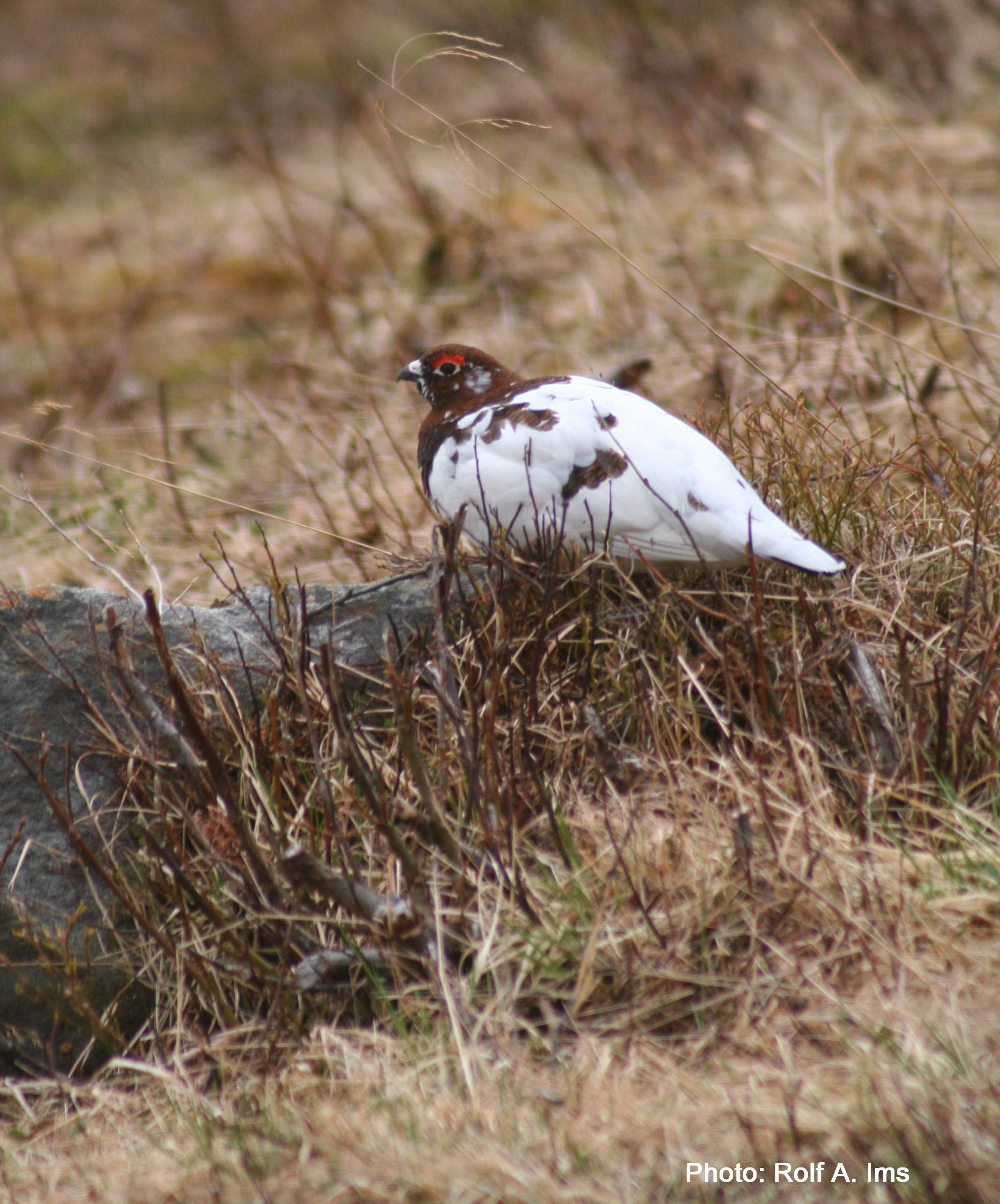Trophic cascades Trophic cascades consist of internal, top-down or bottom-up forcing by which predators, herbivores or plants indirectly affect the abundance, diversity and functioning of species through chain-effects in the food web. The strength of trophic cascades becomes often accentuated when the forcing factors are removed or released due to anthropogenic actions.
Within the framework of ecosystem Finnmark we focus on two main forcing factors. One concerns the effect of reindeer management. Researchers have previously proposed that reindeer overabundance may induce a grazing/browsing mediated effect that harms other herbivores and their predators.
Reindeer overabundance may have a negative effect on willow ptarmigan
For instance, reindeer overabundance has been blamed for the lack of peak abundance lemming years. We have recently rejected this hypothesis by means of large-scale quasi-experimental study (Ims et al. 2007), where we quite on found that locally high reindeer abundance was positively associated with high abundance of lemmings. This might suggest a the contrary relationship between the two species of herbivores. However, we have found indications of negative effect of reindeer overabundance on willow ptarmigan. This effect is most likely mediated by reduced extent of willow thickets owing to reindeer over browsing. Willow thickets is likely to have a hot spot function for biodiversity and ecosystem interactions in the otherwise barren tundra landscape, and we a presently investigating the potentially cascading effect of willow thicket fragmentation/reduction in a separate project (see Willow thickets as hot spots)
Another forcing factor potentially leading to trophic cascades is climatic variation and climate change. We have been examining this issue in the “Arctic fox in Finnmark” project and have published circumstantial evidence suggesting that a bottom-up cascade involving change in vegetation due to warmer climate may have negatively affected the arctic fox (Killengreen et al 2007). Climate change mediated cascade are also relevant for our studies scavenging and arctic predators .
